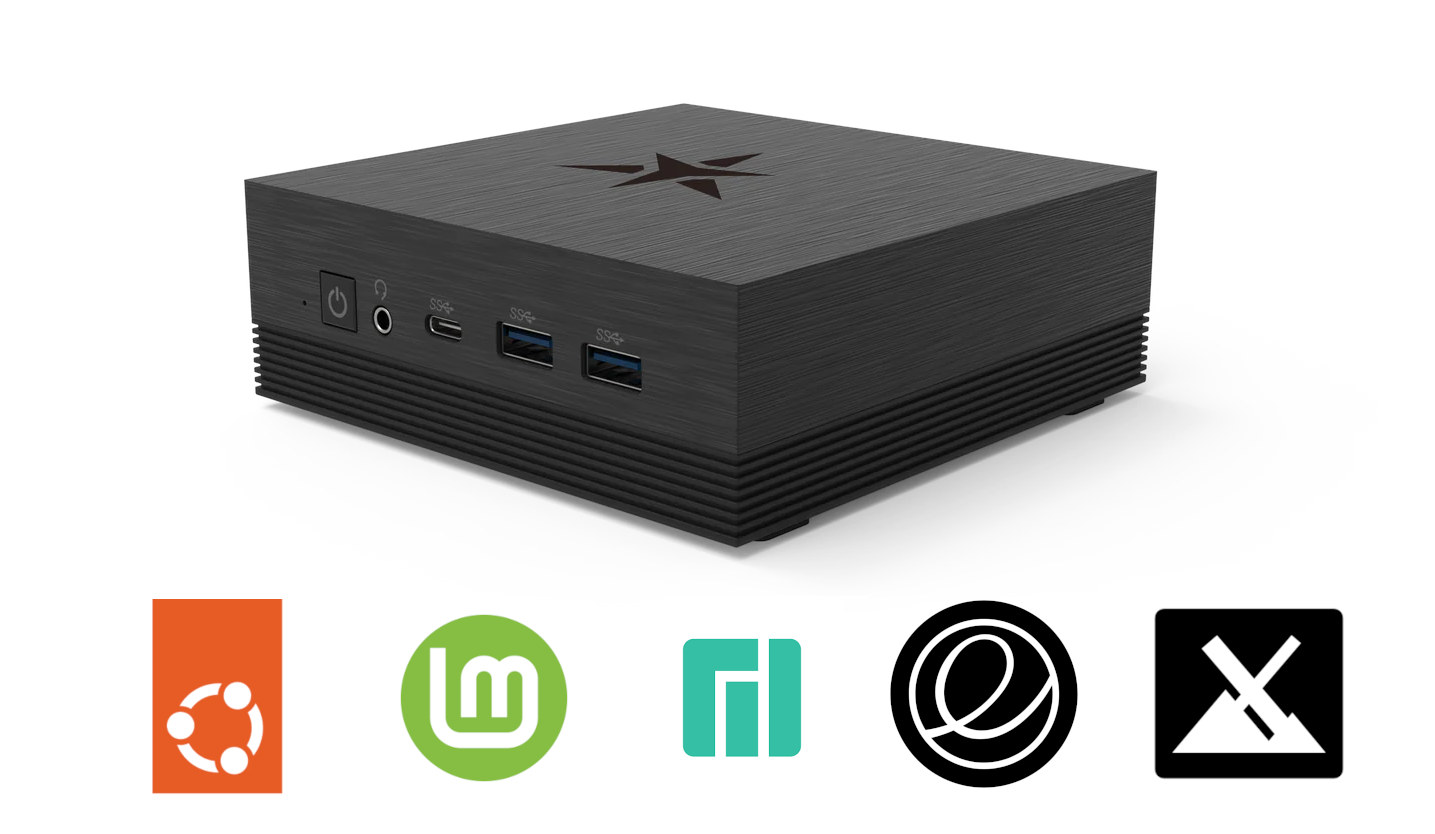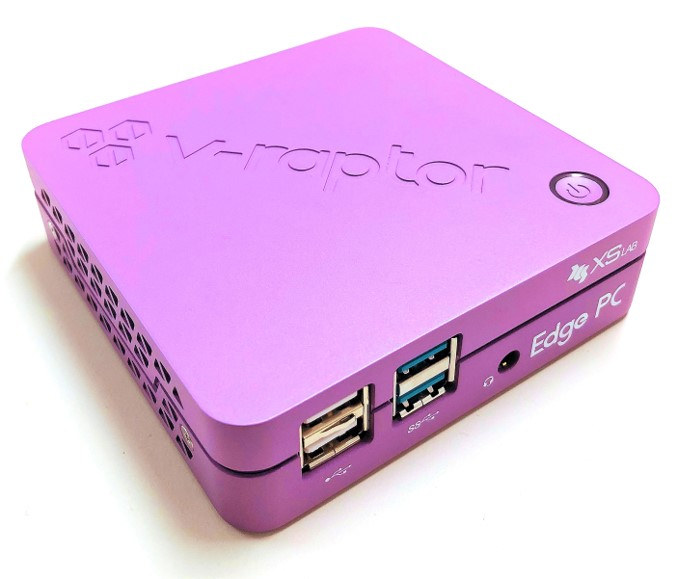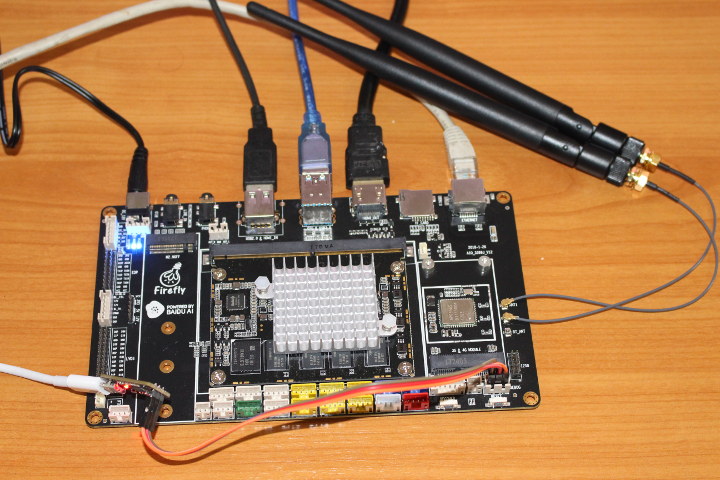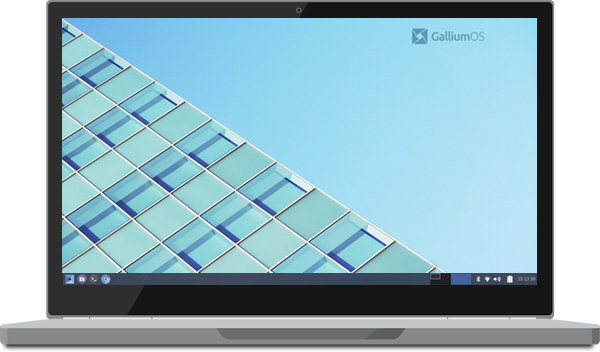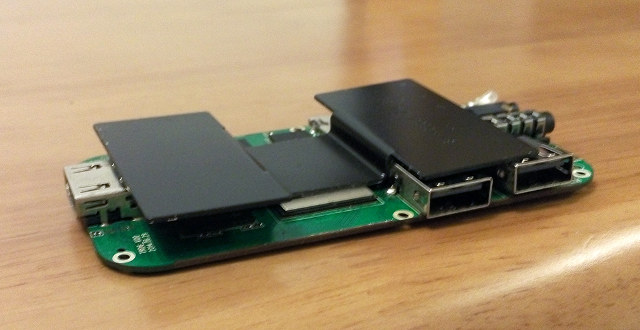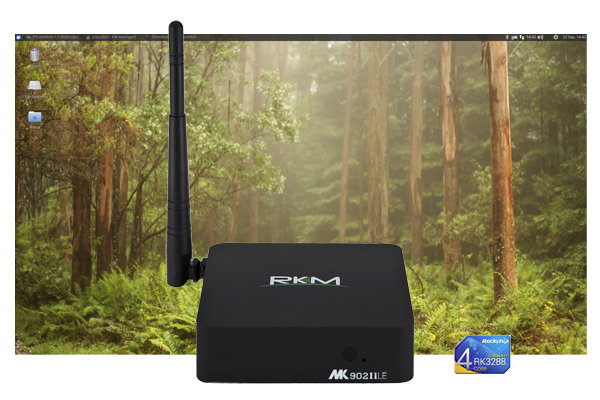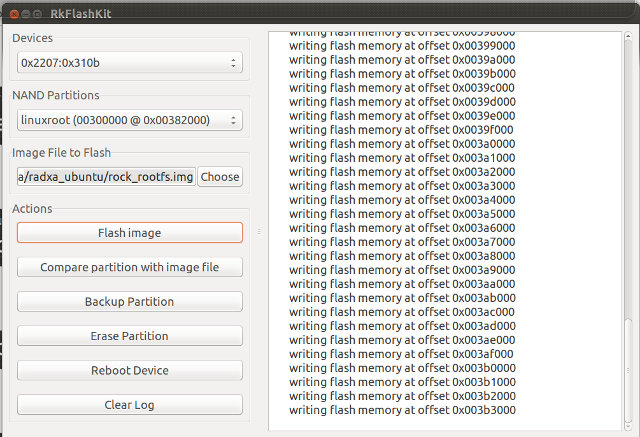NanoPi M6 is a Rockchip RK3588S SBC (single board computer) that is also offered as a complete fanless HMI solution with a metal case and a 3.5-inch capacitive touchscreen display with 800×480 resolution. The M6 is offered with 4GB to 32GB LPDDR5 memory, supports microSD, eMMC flash module, and M.2 NVMe SSD bootable storage, features one HDMI 2.1 port, two MIPI DSI connectors, two MIPI CSI camera connectors, gigabit Ethernet, an M.2 E-Key socket for WiFi and Bluetooth, and a 30-pin GPIO header for expansion among a few other ports and features. NanoPi M6 specifications: SoC – Rockchip RK3588S CPU – Octa-core processor with 4x Cortex-A76 cores @ up to 2.4 GHz, 4x Cortex-A55 cores @ up to 1.8 GHz GPU – Arm Mali-G610 MP4 GPU compatible with OpenGL ES 3.2, OpenCL 2.2, and Vulkan 1.2 APIs VPU – 8Kp60 video decoder for H.265/AVS2/VP9/H.264/AV1 codecs, 8Kp30 H.265/H.264 video encoder AI […]
Star Labs Byte Mk II Processor N200 mini PC is offered with a choice of Linux distributions
Star Labs Byte Mk II is another Intel Alder Lake-N mini PC with an Intel Processor N200 CPU whose main differentiating factor is to ship with Linux pre-installed from a choice between Ubuntu 22.04, Linux Mint, Manjaro, Zorin OS, and many others. The hardware features are quite standard with up to 16GB RAM, an NVMe SSD with up to 2TB capacity, HDMI and DisplayPort video outputs, an audio jack two Gigabit Ethernet ports, WiFi 5 and Bluetooth 5.1, and a few USB ports. Star Labs Byte Mk II specifications: SoC – Intel Processor N200 quad-core processor @ up to 1.0 GHz / 3.7 GHz (Turbo) with 6MB cache, 32EU Intel HD graphics @ 750 MHz; TDP: 6W (PL2 set to 25W) System Memory – 8GB or 16GB single-channel DDR4 3200MHz memory via one SO-DIMM socket Storage 480GB “over-provisioned” M.2 2280 PCIe SSD (option for 960GB or 1920GB) Detachable 2.5-inch HDD/SSD […]
V-Raptor Edge RK3399 Mini PC Runs Xubuntu 18.04 with EBBR Support
We previously wrote about XS LAB’s V-Raptor server equipped with SocioNext SC2A11 24-core Arm Cortex-A53 SoC, but the Korean company has been working on a different kind of project with V-Raptor Edge mini PC powered by Rockchip RK3399 processor and running Xubuntu 18.04 with an Arm EBBR-compliant UEFI bootloader. The mini PC was designed to work as a thin client for Cloud PC VDI service from SK Broadband, but XS Lab appears open to expand its use to other applications depending on interest from distributors. V-Raptor Edge PC preliminary specifications: SoC – Rockchip RK3399 hexa-core processor with 2x Arm Cortex-A72 cores @ up to 1.8 GHz, 4x Arm Cortex-A53 cores System Memory – 4GB LPDDR4 Storage – 16GB eMMC flash or 32GB MicroSD card Video Output – HDMI 2.0 up to 4K, and DisplayPort via USB-C port; dual-independent display support up to 2x Full HD Audio – 3.5mm headphone jack, […]
AIO-3399J Development Board Review with Ubuntu 16.04
Regular readers will know that Firefly team sent me several of their Rockchip boards for evaluation, and I started with a review of ROC-RK3328-CC development board powered by Rockchip RK3328 processor. This time, I went with the high-end AIO-3399J board comprised of a features-packed baseboard and a Rockchip RK3399 system-on-module. Just like with the previous review, I’ve decided to focus on Linux support, in this case Xunbuntu 16.04, and I’ll do an Android review on the company releases Android 8.1 for Firefly-RK3399 board. First Boot with AIO-3399J Board Before booting the board, I inserted the heatsink, and connected the provided WiFi antennas. I also connected some devices and cables, including a mouse, the male to male USB cable to the top USB 3.0 (OTG) port for firmware update, a HDMI cable to my TV, and Ethernet cable, as well as the serial debug board. The final step was to connect […]
GalliumOS is a Linux Distribution for (Intel) Chromebooks & Chromeboxes
When I wrote about Crostini VM to run Linux apps on Chromebooks last week, I was informed about GalliumOS, described as a fast and lightweight Linux distro for ChromeOS devices – meaning Chromebooks and Chromeboxes – that is based on Xubuntu. Compared to ChromeOS, GalliumOS – and other Linux distributions – provides the ability to run more programs and more flexibility, and GalliumOS is said to deliver improved performance, longer battery life, better touchscreen support, etc.. compared to competing Linux distributions. You can go over the Download page to retrieve an image for your Chromebook or Chromebox, and either replace ChromeOS or go for a dual boot setup. The distribution does not support any Arm Chromebooks for now, and only works with some Intel devices with or without caveats depending on the model used. Check out the hardware compatibility matrix for details. The source code can be found on Github. […]
Android 4.4 and Ubuntu 14.10 Tested on Ugoos UM3 mini PC (Rockchip RK3288)
A few days ago I posted pictures of Ugoos UM3, a cute mini PC powered by Rockchip RK3288 quad core Cortex A17 processor, with 2GB RAM, 8GB internal storage, a few USB ports, and Wi-Fi 802.11 b/g/n/ac connectivity. There are so many Rockchip RK3288 based TV boxes and sticks on the market, that it has become difficult to differentiate, so Ugoos has decided to support not only Android 4.4 like all their competitors, but also Ubuntu 14.10, and they’ve provided an alpha release of dual boot Android / Ubuntu images for Ugoos UT3 and UM3 models. Yesterday, I flashed the latest Android/Ubuntu firmware for UM3, and tested the image, so today I can report my findings. First of all, I’d like to point out that I received an earlier sample with various flaws that I reported to Ugoos, and they’ve already committed to fixes: 5V/2A power adapter is not powerful […]
Rikomagic Announces MK902II LE Ubuntu Mini PC Powered by Rockchip RK3288 SoC
Rikomagic announced their MK902II mini PC based on Rockchip RK3288 in May, and which has started shipping recently for about $130. The company have now announced MK902II LE (Linux Edition) based on the same hardware, but instead of running Android 4.4, it’s running Xubuntu 14.04 with some virtualization technique that allows it to run x86 Linux programs such as Skype, and it can even support Wine to run Windows programs. MK902II LE specifications: SoC – Rockchip RK3288 Quad Core Cortex A12/A17 up to 1.8GHz with ARM Mali-T764 GPU supporting OpenGL ES1.1/2.0/3.0, Open VG1.1, OpenCL, DirectX11 System Memory – 2GB (Dual channel 64 bit DRAM controller) Storage – 16GB Internal eMMC with Xubuntu 14.04 preinstalled + micro SD card slot Video Output- HDMI (1080p), and AV output Audio Output – HDMI, AV output, optical output, or external USB audio card (not included) Connectivity – Gigabit Ethernet, 802.11 b/g/n Wi-Fi. USB – […]
Getting Started with Raxda Rock – How to Generate and Flash Ubuntu Saucy Server and Desktop Images
I’ve already written a guide showing how to build and install Android in Radxa Rock. Today I’m going to build the Linux kernel, generate a Ubuntu server images based latest Ubuntu Linaro server release, flash the image to the NAND flash, and show how to install LXDE or XFCE desktop environment. If you are just interested in installing one of the latest supported images, you can download Android, dual boot (Android/Ubuntu), Ubuntu ALIP, and Router images for Radxa Rock @ http://dl.radxa.com/rock/images/, and skip “build” and “generate” instructions, and just follow the flashing instructions below. All steps in this tutorial will be done in Ubuntu 13.10, and lots of the instructions below follow hwswbits blog and Ubuntu Radxa Wiki. Build the Linux kernel Let’s start by building the Linux kernel. I’m assuming you’ve already install development tools in Ubuntu (e.g. apt-get install build-essentials). You can refer to the list at the beginning […]



